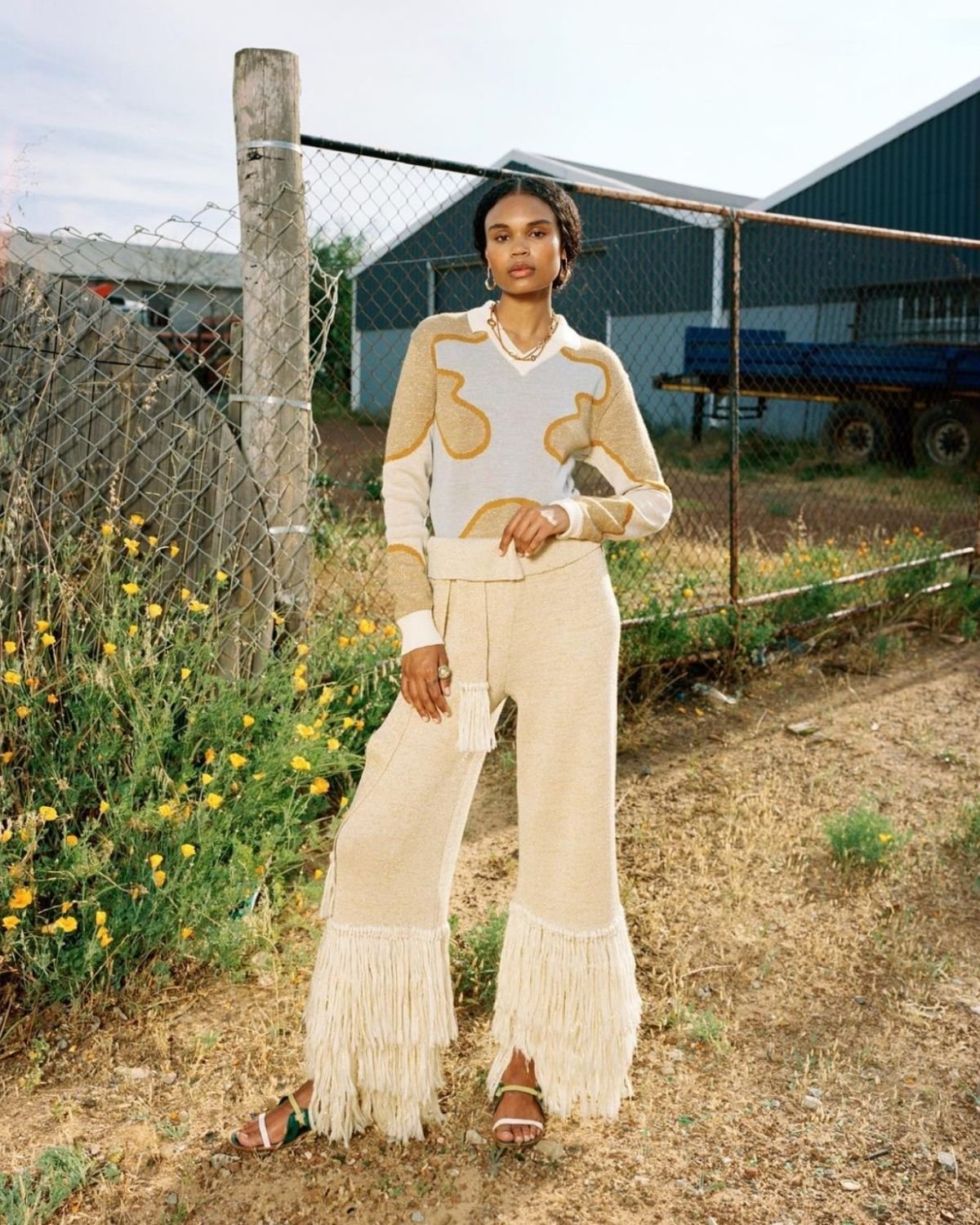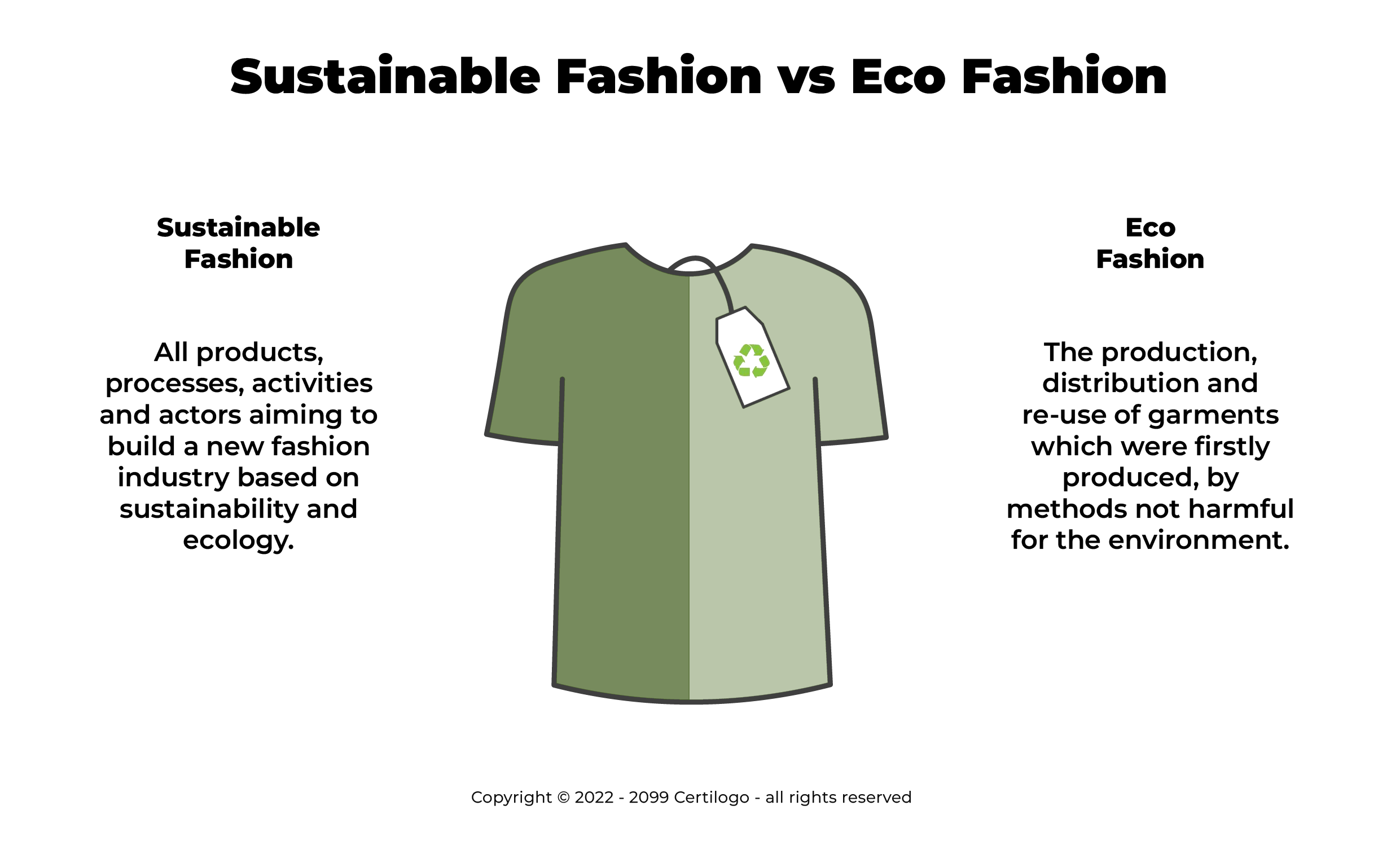Checking out the Rise of Cape Town Sustainable Fashion Brands
Checking out the Rise of Cape Town Sustainable Fashion Brands
Blog Article
Stay Ahead of the Curve by Exploring Innovative Fashion Fads
In a market as dynamic as fashion, staying ahead involves even more than just following existing trends-- it demands an expedition of advancement. Smart fabrics, for example, are changing garments right into practical work of arts, while 3D printing is changing design processes with its personalized, waste-reducing capacities. As sustainability comes to be a foundation, innovations like eco-friendly products and round fashion methods are reshaping environmental obligation - Cape Town Sustainable Fashion. In addition, the merging of modern technology and style proclaims a brand-new period of consumer interaction. Just how, then, can these emerging trends redefine the future of fashion, and what ramifications do they hold for brands seeking to grow in this advancing landscape?

Embracing Smart Textiles
In recent times, the garment industry has experienced a transformative change with the assimilation of smart fabrics, a cutting-edge development that blends innovation with fabric. This evolution represents not only a combination of visual appeals and capability yet additionally a significant leap in the direction of sustainability and customization in vogue. Smart textiles, additionally understood as e-textiles, installed innovative electronics such as sensing units and conductive threads within the fabric, making it possible for garments to engage with the atmosphere or the user.
These fabrics are designed to monitor physical specifications, such as heart price or body temperature level, offering real-time health analytics. Beyond health and wellness applications, clever textiles are additionally being made use of for adaptive clothes, which can change shade or pattern in feedback to ecological stimuli, thus offering a dynamic style experience.
Moreover, the development of energy-harvesting textiles that create power from movement or sunshine is paving the way for self-sufficient wearable innovation. This development is appealing to ecologically aware customers and developers aiming to reduce the eco-friendly impact of style. As study and development in this field advancement, smart textiles are expected to end up being increasingly prevalent, reshaping the landscape of contemporary fashion with their multifunctional capacities.
The Surge of 3D Printing
Reinventing the production landscape, 3D printing has actually become a game-changer in the fashion sector. This advanced technology has enabled designers to push the limits of creativity, generating elaborate and customized garments that were previously unimaginable. By leveraging electronic layout and additive manufacturing, 3D printing promotes the production of complex geometries and patterns, enabling designers to experiment with brand-new appearances and structures.
A remarkable advantage of 3D printing in vogue is its capacity to generate on-demand, minimizing waste and lowering supply demands. This efficiency not only maximizes production processes yet also permits for fast prototyping, making it possible for developers to bring their visions to life in a much shorter duration. Moreover, 3D printing sustains modification to a degree unparalleled by conventional methods, providing special layouts and tailored fits tailored to private consumer choices.
The surge of 3D printing has actually likewise democratized style, making it available to arising designers who can now produce top notch pieces without significant financial investment in conventional manufacturing infrastructure. As innovation remains to advancement, the apparel industry is positioned to harness the complete possibility of 3D printing, discovering brand-new products and techniques that will unquestionably redefine exactly how style is conceived and produced.
Sustainable Style Innovations
As the apparel industry comes to grips with journalism need for ecological responsibility, lasting style technologies have actually arised at the forefront of transformative adjustment. The expanding recognition of eco-friendly influence has actually sustained a shift in the direction of even more eco-conscious techniques and products. Developers and brand names are currently prioritizing sustainability, integrating methods that reduce waste and minimize carbon footprints.
One substantial growth is the increase of circular style, which highlights recycling and upcycling to extend the lifecycle of garments. This method not only decreases waste yet also motivates customers to take on an extra conscious approach to apparel consumption. Furthermore, the use of lasting materials, such as natural cotton, hemp, and recycled polyester, has gotten grip. These materials need much less water and energy throughout manufacturing, substantially lessening ecological influence.
One more breakthrough hinges on the adoption of ingenious dyeing techniques that utilize waterless procedures or natural dyes, consequently minimizing the vast quantities of water and chemicals traditionally made use of in textile dyeing. Furthermore, improvements in biotechnology have led to the creation of lab-grown natural leather and materials, offering environmentally pleasant and cruelty-free options to conventional products. Through these introducing efforts, the fashion market is making purposeful strides in the direction of a more sustainable future.

Tech-Integrated Garments
Tech-integrated clothing represents a cutting-edge fusion of fashion and innovation, reshaping just how people interact with their apparel. This cutting-edge domain is noted by the inclusion of wise fabrics and embedded electronic components, enhancing both performance and visual allure. From health and fitness trackers embedded in sports apparel to warmed jackets regulated by means of smartphone apps, tech-integrated garments supplies consumers extraordinary convenience and versatility.
Introducing brand names are driving this pattern, concentrating on producing garments that reply to environmental stimuli or user commands. For example, some garments can change shade or pattern in feedback to temperature changes, while others include biometric sensors to check health metrics like heart rate or anxiety degrees. The seamless combination of innovation into textiles also extends to ecological sustainability, with efforts to create self-cleaning fabrics or garments that adjust to climate condition, thus lessening the demand for numerous layers.
Additionally, the introduction of wearable innovation is not simply restricted to apparel yet includes devices like watches and eyeglasses, further expanding the Your Domain Name range of tech-integrated fashion. As the sector proceeds to introduce, the possibility for customization and personalization in apparel grows, using consumers one-of-a-kind, tech-enhanced style experiences that deal with their individual needs and preferences.
Future of Virtual Style
In the last few years, the future of digital fashion has actually become a transformative force within the market, leveraging developments in digital innovation to redefine exactly how style is produced, experienced, and consumed. By integrating increased fact (AR), online truth (VIRTUAL REALITY), and 3D layout tools, developers can now craft immersive and interactive experiences that go beyond standard style limits. Virtual fashion enables the development of garments that exist only in electronic settings, using countless opportunities for advancement without the constraints of physical production.
This digital shift not only provides opportunities for creative expression however also addresses sustainability concerns fundamental in conventional style methods. Cape Town Sustainable Fashion. By eliminating the demand for physical resources, digital fashion decreases waste and lessens carbon impacts. Additionally, the rise of online fashion lines up with the increasing customer demand for unique and customized experiences, as digital garments can be tailored and tailored to private preferences effortlessly

Verdict
The garment industry's future lies in the integration of cutting-edge innovations and lasting methods - anonymous Cape Town Sustainable Fashion. Smart textiles and tech-integrated clothing are boosting capability, while 3D printing provides opportunities for customization and waste decrease. Lasting style, through eco-friendly products and round strategies, demonstrates a dedication to ecological stewardship. Furthermore, virtual fashion is poised to redefine consumer communications. Adapting to these patterns is vital for brands looking for to continue to be competitive and appropriate in this rapidly developing landscape.
In you can try here recent years, the fashion sector has observed a transformative change with the integration of smart fabrics, an advanced advancement that blends innovation with fabric.As the fashion sector grapples with the pressing demand for ecological duty, sustainable style developments have emerged at the forefront of transformative change.In current years, the future of online style has arised as a transformative force within the industry, leveraging innovations in electronic innovation to redefine exactly how style is developed, experienced, and consumed. The increase of online fashion straightens with the boosting customer need for tailored and distinct experiences, as virtual garments can be personalized and tailored to specific preferences with ease.
The style sector's future lies in the assimilation of innovative technologies and sustainable techniques.
Report this page